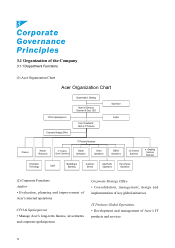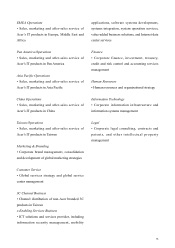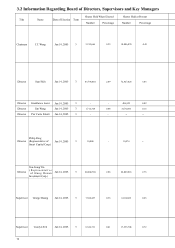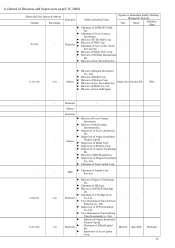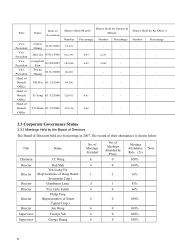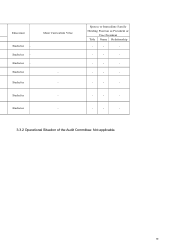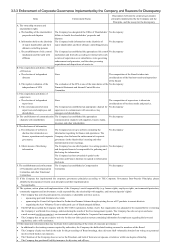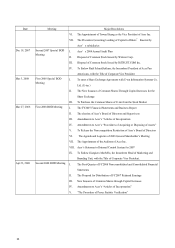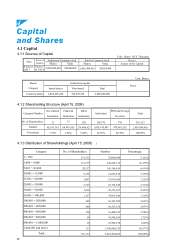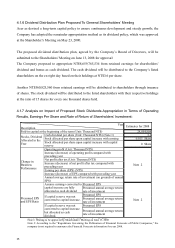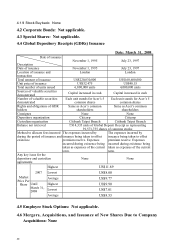Acer 2007 Annual Report Download - page 24
Download and view the complete annual report
Please find page 24 of the 2007 Acer annual report below. You can navigate through the pages in the report by either clicking on the pages listed below, or by using the keyword search tool below to find specific information within the annual report.21
3.3.4 Statement of Internal Control System
Date: March 27, 2008
Based on the findings of a self-assessment,
Acer Inc. (hereinafter, the “Company”) states
the following with regard to its internal control
system during the period from January 1, 2007
to December 31, 2007:
1. The Company is fully aware that establishing,
operating, and maintaining an internal control
system are the responsibilities of its Board of
Directors and managers. The Company has
established such a system aimed at providing
reasonable assurance regarding the achievement
of objectives in the following categories: (1)
effectiveness and efficiency of operations
(including profitability, performance, and safe-
guarding of assets), (2) reliability of financial
reporting, and (3) compliance with applicable
laws and regulations.
2. An internal control system has inherent
limitations. No matter how perfectly designed,
an effective internal control system can provide
only reasonable assurance of accomplishing the
three objectives mentioned above. Moreover,
the effectiveness of an internal control system
may be subject to changes of environment or
circumstances. Nevertheless, the internal control
system of the Company contains self-monitoring
mechanisms, and the Company promptly takes
corrective actions whenever a deficiency is
identied.
3. The Company evaluates the design and
operating effectiveness of its internal control
system based on the criteria provided in the
“Regulations Governing Establishment of
Internal Control Systems by Public Companies”
promulgated by the Securities and Futures
Bureau of the Financial Supervisory Commission
(hereinafter, the “Regulations”). The criteria
adopted by the Regulations identify five
constituent elements of internal control based on
the process of management control: (1) control
environment, (2) risk assessment, (3) control
activities, (4) information and communication,
and (5) monitoring. Each constituent element
further contains several items. Please refer to the
Regulations for details.
4. The Company has evaluated the design and
operating effectiveness of its internal control
system according to the aforesaid criteria.
5. Based on the findings of the evaluation
mentioned in the preceding paragraph, the
Company believes that, during the year 2006, its
internal control system (including its supervision
of subsidiaries), as well as its internal controls
to monitor the achievement of its objectives
concerning operational effectiveness and
efciency, reliability of nancial reporting, and
compliance with applicable laws and regulations,
were effective in design and operation, and
reasonably assured the achievement of the
above-stated objectives.



